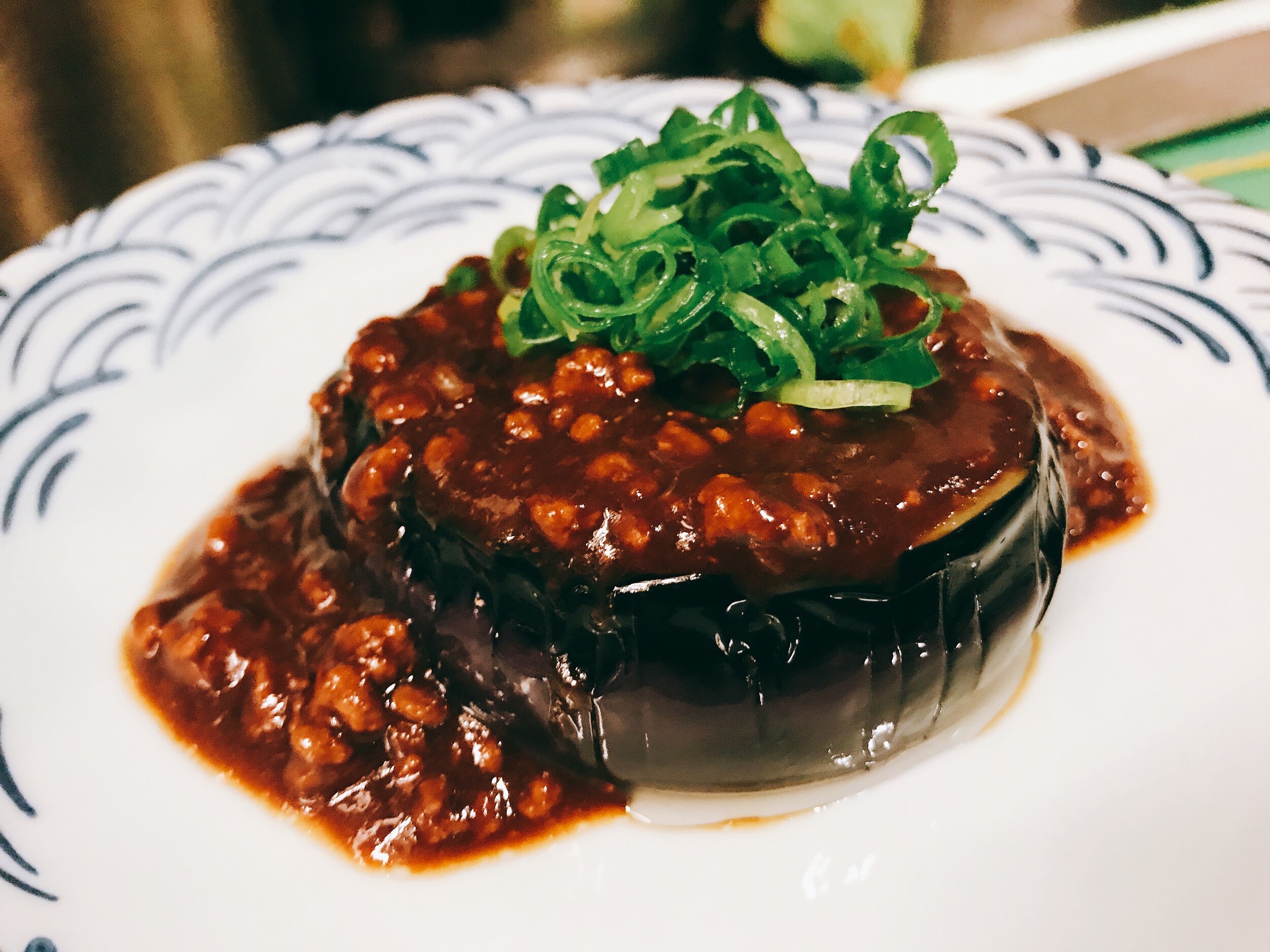Serves 4
One large aubergine
Green onions as needed (cut into finely)
Canola oil as needed
To make dengaku sauce: Combine 2 teaspoons. vegetable oil, 1 tablespoon diced ginger (peel skin, slice finely and dice finely), 100 grams minced beef, 1 tablespoon. sake, 80 grams Hacho-miso paste, 40 grams caster sugar, 2 tablespoons mirin (substitute is sherry or port), 40 ml water.
*Taste the sauce and add more sugar to your taste if needed.
1. Heat a saucepan with the vegetable oil. Add diced ginger and stir fry, add the minced beef and keep stirring until the minced beef is cooked. Add sake and mix well. Add the miso paste, sugar and mix well then add the mirin and water and mix well. Let it simmer and keep stirring with a spatula then remove from heat.
2. Cut the aubergine into 2-centimetre medallions and poke with a fork, then pan-fry in canola oil over medium heat oil. Remove from the heat and place the auberge on a paper towel. Squeeze to remove the excess oil.
3. Serve the aubergine with the sweet dengaku miso sauce topped with chopped green onions.
I prefer to use Hatcho-miso to make sweet miso sauce for this dish. Hatcho-miso is a dark smoky flavoured miso made in Okazaki in Aichi Prefecture and has a history of over 350 years. This sauce without the minced beef is dengaku-miso (田楽みそ). Japanese people love to use the sauce during Sakura (cherry blossom) season in spring. The sweet miso sauce with or without minced meat goes well on grilled tofu, stir-fried or deep-fried aubergine, char-grilled bamboo shoots and the list goes on and on. If some of your guests are vegans and vegetarians, you can make this sauce without the minced beef.
Again, this dish is complimented nicely with freshly boiled Japanese rice and miso soup.
The oldest miso-maker in Japan is Maruya Hatcho Miso in Okazaki. I visited there in January 2020. One of these wooden casks full of matured-miso can make miso soup for a family of four three times a day every day for over 200 years according to a Maruya sales manager. The town of Okazaki was once called Hatcho village because the distance from the village to the Okazaki Castle where Shogun Ieyasu Tokugawa resided in the Edo period was hatcho (about 870 m). Hatch means 8 and cho was a measure of distance in those days.
Happy dinner guests and the two chefs, Cheers! After a long and enjoyable day working together with Chef Yagi at Namur Ogawa, May 2018. Yagi to the left, Shuji to the right and two dinner guests from London in-between us.
In May 2018, I made this dish at Namur Ogawa, a Japanese Sushi Restaurant run by my friends Yagi and his wife Himin Lin. They visited my kitchen 5 years ago to learn authentic Japanese cuisine and they invited me to visit their restaurants and home in Namur, Belgium the next time I went to Europe. They also own a Japanese Ramen restaurant Sanga which is run by a Japanese Ramen Chef. At Shanga, I showed the dinner guests how to make soba noodles from scratch and I made kamo-serio, soba noodles served with duck breast fillet slices in a hot dipping sauce. Chef Yagi ate 5 servings of this dish for supper after we finished a long day preparing and cooking a five-course dinner for our guests.
When in Belgium, I highly recommend that you book a dinner at Namur Ogawa: https://www.ogawa.be/ Chef Ygi Lin is the father of two lovely children and a sweet husband and hard-working chef.
This recipe was edited by Wendy Gough. Thank you Wendy for your help.



